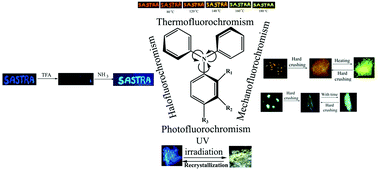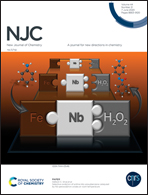Triphenylamine-based stimuli-responsive solid state fluorescent materials
Abstract
Smart fluorescent materials exhibit a controlled fluorescence response to different external stimuli such as pressure, heat, light, pH, etc. Molecular structure and supramolecular assembly via weak intermolecular interactions strongly influence the fluorescence efficiency and colour. In particular, non-planar molecular structures play a significant role in developing solid state fluorescent materials. Triphenylamine (TPA), a typical non-planar propeller molecule with interesting optoelectronic properties, provides an excellent opportunity for developing a variety of molecular fluorescent materials by taking advantage of synthetic feasibility. For example, a donor–acceptor (D–A) aggregation induced emissive (AIE) fluorophore can be developed by integrating an acceptor group into the phenyl unit of a TPA donor. In this review, we focus exclusively on TPA-based smart fluorescent materials that exhibit distinct and reversible fluorescence switching towards different stimuli. Molecular engineering of the TPA fluorophore resulted in the development of different types of stimuli-responsive materials and the conformational flexibility of non-planar phenyl groups often produced polymorphism induced fluorescence tuning. A detailed discussion of the structure–property relationships of TPA derivatives could provide insights for developing new TPA-based smart fluorescent materials with versatile properties.

- This article is part of the themed collection: 2020 Focus and Perspective articles


 Please wait while we load your content...
Please wait while we load your content...